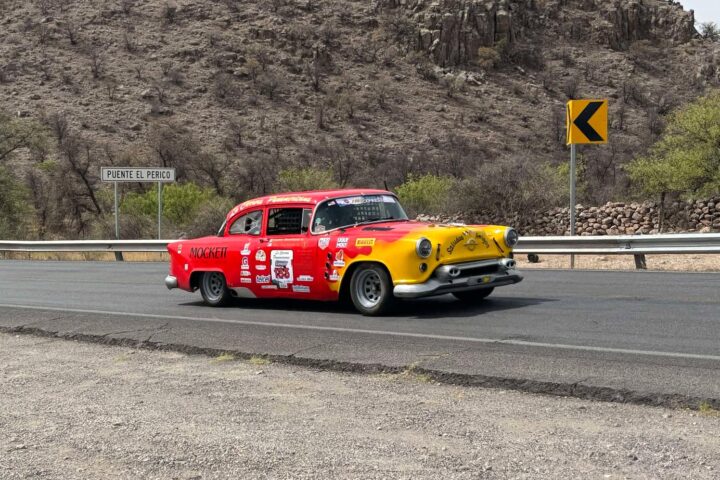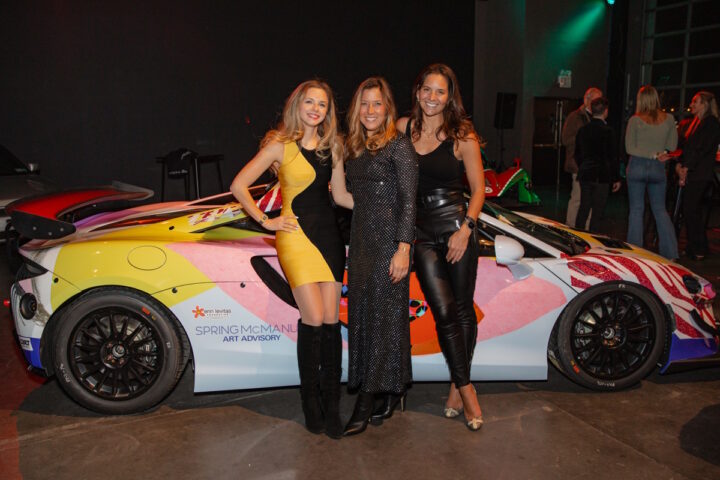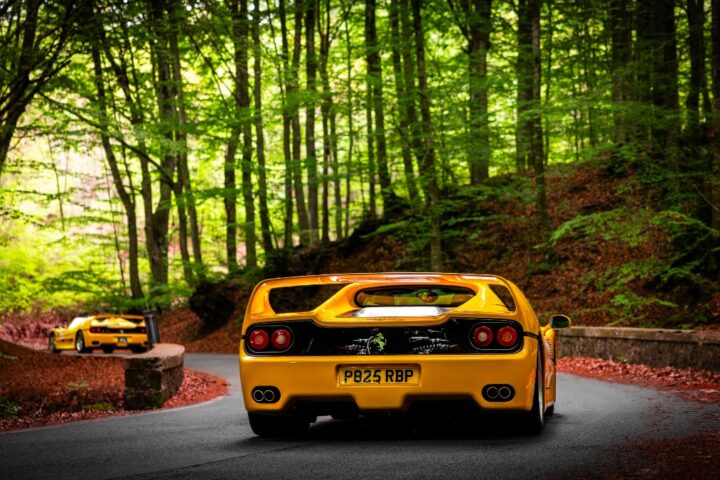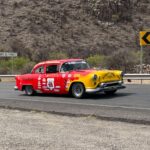Opening day of practice for the 108th running of the Indianapolis 500 was rain-filled, allowing just 23 minutes of track time. The following day, it was a full morning of rain, which prohibited any cars from being on the track. Shortly after noon, the rain(s) subsided, providing ample time for the grounds’ crew to ‘dry’ the track, and the practice began at 3PM. Given the enormity of the oval track (2.5 miles), several trucks are required to pull large blow dryers over 2 hours to dry the track thoroughly. Even the smallest patch of moisture on the track can result in traction loss.
Track drying equipment was in full use on before Wednesday’s practice as well as Race Day Sunday. Gas-powered blowers are pulled slowly behind track service trucks, allowing the wind to exit the L-shaped vent.
With rain shortening Tuesday and Wednesday practice times, the sun shown Thursday and ‘Fast Friday’ allowing elongated session times. Fast Friday denotes the ability of drivers to increase horsepower by pushing a button on their steering wheel. This triggers a 15% engine power boost resulting in an increase of about 10MPH. This ‘push to pass’ feature is only used on Fast Friday and not available during qualifying or Race Day.
Driver Colton Herta in car #26 turned the fastest Fast Friday lap speed of 234.97 MPH. He started 13th and crashed on lap 86 to finish 23rd.
Qualifying Saturday resulted in record times with Team Penske cars winning starting positions 1, 2 and 3. The 500-mile race is comprised of 33 cars lined up 3 across and 11 rows deep. This year’s field held drivers from 8 states and 11 countries. The first 2 starting rows had 3 drivers who were former Indy 500 winners.
Driver Scott McLaughlin in Pennzoil car #3 won the pole position with the top average speed of 234.2 MPH. This average is calculated from each driver’s 4 qualifying laps.’
Managing fuel consumption during a race is extremely important. Shell is the official (and only) fuel used at the race. The 100% octane fuel is 100% ‘renewable’ meaning it contains a significant mix of second-generation ethanol-which comes from sugarcane waste. All teams are allotted 125 gallons for the race. Each car holds 18.5 gallons and averages less than 2 MPG.
Race Day officials inspect #28 Marcus Ericsson’s pit fuel tank. Each team has a 125-gallon refueling tank next to their pit wall. It is a gravity feed system delivering 3 gallons a second.
In addition to fuel, tire management is also important. Car #26 pit crew measures tire depth prior to Sunday’s start. A set of tires will last 30-33 laps with pit stops more likely dependent on tire wear VS fuel supply. Firestone is the official tire of the Indy Racing Series.
The race was to start at 12:45, and around noon, race officials asked fans to clear the stands and seek shelter as inclement weather was spotted on radar. At 1 o’clock, heavy rain and lightning began, lasting about an hour. Track dryers appeared around 2:30, and the Green Flag was waved at 4:45. Race officials shortened the traditional opening ceremonies as the Indy 500 rules mandated that 101 laps must be run for the race to be considered completed.
With the 4-hour rain delay over, the race was once again delayed by a crash on the first lap. This crash took out #28 Marcus Ericsson (the 2022 winner) who started 32nd, #30 Pietro Fittipaldi who started 30th and rookie driver #66 Tom Blomqvist who started 25th. A few more yellow flags for ‘car contact’ and mechanical issues slowed the race. However, the first lap crash retired the most cars.
Back-to-back winner Josef Newgarden stops ‘on the Bricks’ to celebrate the victory with his Shell Oil Team. The last back-to-back winner was in 2002.
It was an exciting finish with #2 Josef Newgarden and #5 Pato O’Ward battling it out in the last lap, with Newgarden passing O’Ward and coming out of Turn 3 to win the race.
Newgarden in the Winner’s Circle enjoying his bottle of whole milk. Drivers are surveyed as to what kind of milk they prefer; whole, 2% or skim.
Even with the 4-hour rain delay, over 300,000 fans remained on track to watch the race! As I walked to and from my photo spots, it was evident that this race is a long-held tradition for many families and fans. Although some smiles may have been libation-induced, seeing a fan who wasn’t happy to be at the track was rare. Several folks sported shirts or hats identifying how many Indy 500 races they have attended. For some, it may be difficult to attend the 500, and if you fall into this category, I highly recommend attending Qualifying Weekend. This weekend has 2 days of high speeds and plenty of excitement. Most importantly, you will “experience the track” and ascertain the Indy 500 Smile.
About the author: Chris Mulvihill founded Classiccaradvisors.com in
2007. His passion for cars began as a young boy walking the service area
of his grandfather’s Oldsmobile dealership. After graduating from Indiana
University, his automobile knowledge expanded to the factory side as a Ford
Motor Company Field Manager based in Los Angeles. During his time on the
West Coast, he began attending vintage car events where he established
deep-rooted friendships in the classic car industry. In addition to being an ASE Certified Technician he enjoys
the history of cars and their restoration.




























